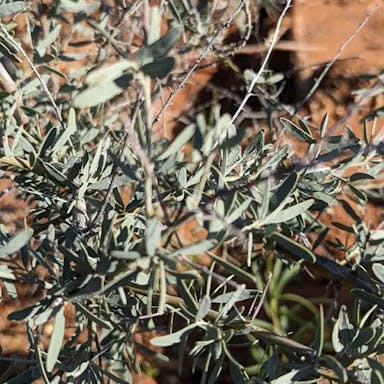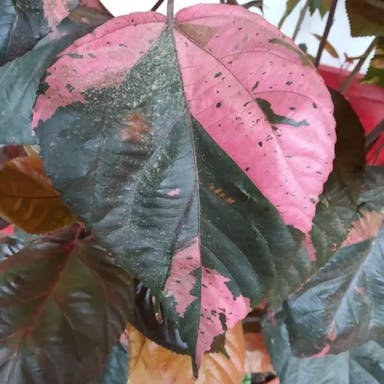White pear, scientifically known as Apodytes dimidiata, is a plant native to South Africa. Leaves with glossy darkness give a small fragrant whiteness to flowers. After the flowers, tiny, round black fruit grows that birds can eat. This plant is often used in traditional medicine. It is a tree that grows slowly but can reach 10 meters high. White pear is relatively easy to drain the soil well and prefers full sunlight to partial shade. It is a popular choice for landscaping due to the attractiveness of the fruit. The plant is also known for its hardness and density, which is used in crafts and furniture.
White pear
- Scientific name
- Apodytes dimidiata
Basic Information
- Metteniusaceae Family Apodytes Genus White pear Species
- Metteniusaceae > Apodytes > Apodytes dimidiata
- 67%
- The Completeness of This Encyclopedia
Please help us complete the encyclopedia, Terrarium is a encyclopedia service to be completed with everyone in the world. Currently, this page is 67% complete. For more information on how to contribute, please click here.
- Shrub
- Tree
- Height
- Flower Color
- Leaf Color
- Anthesis
- Sunlight Exposure
Full Sun Long hours of sunlight from morning to afternoon Partial Shade A location in the shade of a tree or where either the morning or afternoon is shaded Full Shade A place where there is no direct sunlight
- Partial Shade
- Hardiness Zones
This is an indicator to know to which zone each plant can winter. Knowing the zone of each plant gives you an idea of the cold temperature resistance when grown in the ground without a roof. 2: -42.7 to -40.0 3: -39.9 to -34.4 4: -34.3 to -28.9 5: -28.8 to -23.3 6: -23.2 to -17.8 7: -17.7 to -12.2 8: -12.1 to -6.7 9: -6.6 to -1.1 10: -1.0 to 4.4 11: 4.5 to 10.0
- 10
- Cold resistance
- Fair
- Heat resistance
- Good
- Habitat of origin
- South Africa
- Growth Rate
- Normal
What is White pear (Apodytes dimidiata)?
What is White pear (Apodytes dimidiata)
Flower meaning
The flower language regularly employed in America for the White pear plant is: - Innocence - Purity - Serenity A single representative case is
Calendar of White pear (Apodytes dimidiata)
Calendar
White pear typically blooms in early spring in the United States, usually around March to April. The flowers are at their peak during this time, displaying their full beauty. The blooming period lasts for about 1 to 2 weeks, depending on the specific variety of White pear. To ensure prolonged flowering, provide appropriate sunlight, water, and well-draining soil. Proper pruning in late winter can also promote more abundant and extended blooming. Avoid overuse of nitrogen fertilizers to maintain a strong blooming cycle.
How to grow White pear (Apodytes dimidiata)
Watering
The White pear plant requires watering approximately every 7-10 days during the growing period. Ensure the soil moisture is even, allowing the top 1-2 inches of soil to dry between waterings. During the dormant period, water the plant every 2-3 weeks to prevent root rot. Adjust the watering frequency based on ambient temperature and humidity to maintain appropriate soil moisture. Don't overwater, as it can cause root choking and fungus sicknesses. Often check ground wetness by finger in ground to know if it needs water.
Soil and Fertilizer
NO DATA
Sunlight and Place
NO DATA
Advanced Information of White pear (Apodytes dimidiata)
Pruning
White pear requires regular pruning. Start by removing dead, damaged, or diseased branches. Trim back other branches as necessary. Apply a balanced fertilizer after pruning to aid recovery and growth. Regular pruning is crucial to keep White pear trees healthy and productive. Promote growth by pruning back lateral buds or branches. Fertilizing aids in recovery and growth. Remove any crossing or inward-growing branches during the dormant season, before new growth begins, for optimal results.
Planting and Harvest
The white pear requires well-draining soil with an excellent drainage system to stay healthy. Select containers with holes. Gently take it out and repot it in a somewhat bigger pot. Spray water sometimes when the air is dry. Be careful not to overwater it. Check routinely for bugs. Cut off any dead or damaged leaves to help it grow new ones and maintain its health.
Propagation
White pear can be divided into parts, then grown in dry soil, particularly in spring. Plant experts can also try dividing in summer. Take short parts of stems during warm weather, let them grow roots, then plant in sandy dirt mixed with peat moss. Leaf pieces can be taken in spring or summer, keep moist in a place where water flows out well until roots form. For the best results, use different methods to grow new plants. Keep ripe, dry seeds in a cool, dry area until planting time.
Pests and Diseases
White pear is susceptible to various pests and diseases, including pear psylla, fire blight, and pear scab. Pests such as insects feed on the sap, causing leaf curling and stunted growth. Bacterial diseases can lead to wilting, blackened leaves, and cankers on branches. Fungal diseases may cause dark spots on leaves and fruit, leading to defoliation and reduced fruit quality. It is crucial to practice good sanitation, use proper pruning techniques, and choose resistant varieties. Regular monitoring and early detection of pests and diseases are essential for effective management. A declining plant health may result from damage caused by pests and diseases.
Habitat of White pear (Apodytes dimidiata)
Habitat
Toxicity of White pear (Apodytes dimidiata)
Health Benefits
- edible
- Inedible
- Toxic
- No toxicity
NO DATA
Toxic for dogs and cats
NO DATA
Q&A of White pear (Apodytes dimidiata)
- Is there a recommended way to choose?
There are two primary varieties of white pear: Variety A has larger fruits while Variety B has sweeter tasting fruits. When choosing seeds, select those that are plump, firm and undamaged. For seedlings, opt for healthy plants with vibrant green leaves and sturdy stems. Ensure roots are well developed and not root bound. It is essential to choose varieties based on preferences for fruit size or taste. Variety A is ideal for those preferring larger fruits, Variety B for those who enjoy sweeter fruits. Purchase quality seeds and seedlings from reputable sources.
0
0












